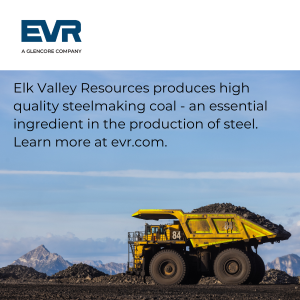
The Government of Canada has determined that Elk Valley Resources’ (EVR) proposed Fording River Extension Project (FRX) requires a further federal impact assessment, citing potential risks to water, wildlife, and Indigenous rights.
The Impact Assessment Agency of Canada (IAAC) issued its Notice of Further Assessment Decision with Reasons on October 27, 2025, concluding that the project “may cause adverse effects within federal jurisdiction.” These include potential impacts on fish and fish habitat, migratory birds, transboundary and international waters, and the health and environmental conditions of Indigenous Peoples.
The IAAC also cited possible adverse impacts on the exercise of Section 35 Indigenous rights, referencing submissions from Indigenous governments and the public during early review stages.
“In light of the factors considered, IAAC is satisfied that the carrying out of the designated project may cause adverse effects within federal jurisdiction,” the decision reads. “As a result, IAAC has decided that a further assessment is required.”
The federal ruling comes shortly after the B.C. Environmental Assessment Office (EAO) issued a positive Readiness Decision on October 10, 2025, allowing the project to move into the provincial environmental assessment phase. ElkValleyCoal.com previously reported that this decision effectively “greenlit the next phase” of the review process, confirming the project’s readiness for detailed study and public engagement.

EVR said it welcomed the federal and provincial decisions, emphasizing that both are part of a coordinated assessment process that began in 2021 under the B.C. Environmental Assessment Act and the Impact Assessment Act (Canada).
“The Fording River Extension (FRX) Project is a proposed extension of the current Fording River Operations and plans to use existing equipment and infrastructure to reduce the footprint of new activities,” EVR stated.
“On October 10, 2025, the Project received a positive Readiness Decision from the B.C. Environmental Assessment Office, determining the Project is ready to move into the environmental assessment phase, and the Impact Assessment Agency of Canada decision is in line with the province’s readiness decision.”
“Through engagement with the Ktunaxa Nation Council (KNC) and Yaq̓it ʔa·knuqⱡi ‘it (YQT), EVR has incorporated numerous project refinements, including a reduced project footprint, prioritizing progressive reclamation, integrating additional water quality measures, and a project staging plan that KNC and YQT have confirmed as an important mitigation.”
“We look forward to continued engagement with Indigenous Nations through the assessment process as a project that incorporates numerous measures to mitigate environmental impacts, while continuing the benefits of the operation — including providing 1,500 direct jobs and generating $1.5 billion in annual provincial GDP in 2024 alone.”
If approved, EVR expects construction to occur between 2028 and 2030, with mining to commence in 2030.

The IAAC decision comes as EVR continues to invest heavily in water quality protection through the Elk Valley Water Quality Plan (EVWQP) — a long-term, science-based strategy launched in 2014 to manage and reduce selenium and nitrate concentrations in regional waterways.
At its annual open house on November 26, 2024, EVR shared evidence of measurable improvements:
“Our four existing water treatment facilities are successfully removing between 95 % and 99 % of selenium from treated water,” said Colin Miller, Program Director for Water Quality and Projects, Sustainable Development, EVR. “The plan is working; selenium concentrations have stabilized and are now reducing downstream of treatment. We are committed to further action, with plans to build six additional water treatment facilities by 2027.”
The program, originally initiated under Teck Coal, now operates under EVR’s management with four active treatment plants and six new facilities planned by 2027. The approach is widely regarded as one of the largest water quality management initiatives in Canada’s mining sector and is producing measurable results throughout the Elk River watershed.
The dual decisions by the B.C. EAO and IAAC underscore both the economic importance of the Fording River operations and the environmental scrutiny surrounding future mining in the Elk Valley.
EVR’s approach — combining infrastructure reuse, water treatment expansion, and early Indigenous collaboration — reflects an effort to maintain community confidence while protecting one of B.C.’s most critical industrial assets.
The forthcoming federal impact assessment will now proceed with comprehensive studies, Indigenous consultation, and public engagement before any final approvals are issued. If authorized, the Fording River Extension would sustain major employment and tax revenue for decades while continuing to advance large-scale environmental mitigation.
Sources:
Impact Assessment Agency of Canada — Notice of Further Assessment Decision with Reasons (October 27, 2025)
B.C. Environmental Assessment Office — Fording River Extension Project Readiness Decision Report (October 10, 2025)
ElkValleyCoal.com — “BC Regulators Greenlight Next Phase of Fording River Extension Assessment” (October 2025)
Elk Valley Resources — “Elk Valley Water Quality Plan Achieves Significant Progress” (November 26, 2024)
Province of British Columbia — Area-Based Management Plan for the Elk Valley (Updated 2025)
EVR Official Statement — Fording River Extension Project (October 2025)
























